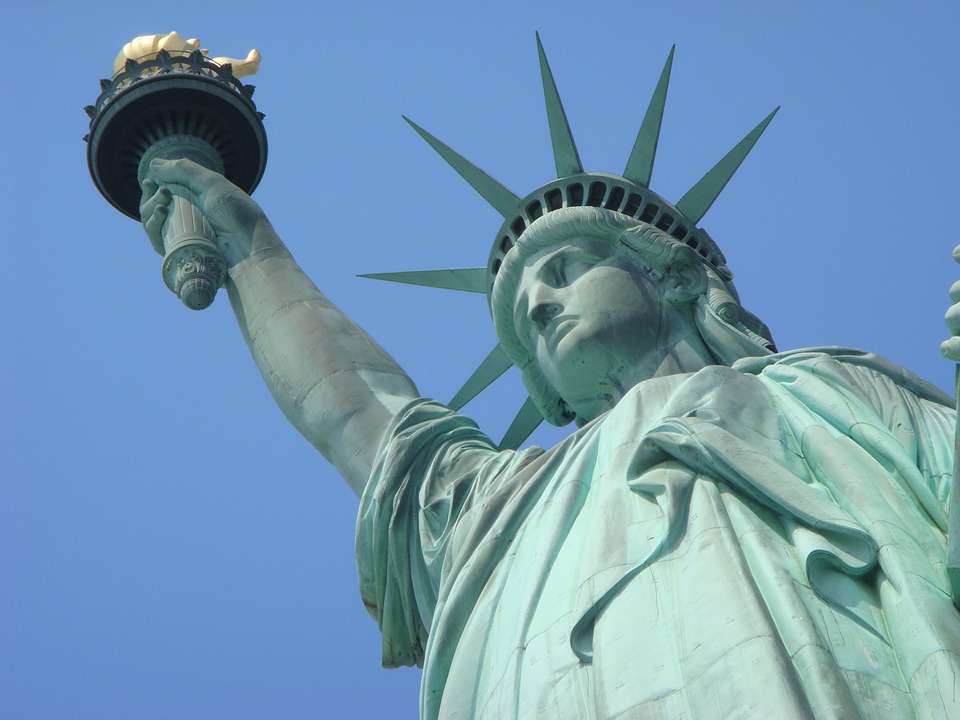On October 28, 1886, a 240-foot tall structure originally named “Liberty Enlightening the World” was revealed to an audience on Ellis Island in New York. This was the tallest structure in New York City, and it is still a great symbol in America today.1 Who would have known that a French sculptor and a French scholar would want to commemorate America for being a free nation for 100 years. These two individuals go by the names Frederic Auguste Bartholdi and Edouard-Rene Laboulaye.2 These two men met and created a sketch for the statue and wanted it to be a symbol of a “freedom-loving republic, a government in which power lay in the hands of the people, instead of a king.”3 The statue would also symbolize the alliance between France and America that began during the American War of Independence against Britain. There is a misconception that the statue was built to represent a welcoming icon for immigrants; however, this was not the initial purpose of the statue.4 France built the Statue of Liberty beginning in 1875. It was made out of 450,000 pounds of copper and steel. It was agreed by both nations that America was to be in charge of the pedestal, which weighed 27,000 tons, for the statue to rest on.5
In the construction of the statue, Bartholdi had used three hundred copper sheets to cover the entire statue. The reason why the statue appears to be green is due to its long exposure to the atmosphere over time. Something interesting is that the features of the statue’s face resemble those of Bartholdi’s mother and the arms resemble those of his wife. The Statue of Liberty is also presented wearing a long robe, which was influenced by ancient Greek and Rome attire. The purpose of this was to serve as a reminder of the ideals of that ancient era.6

The statue is carrying a tablet in her left hand with the year “1776” written on it, which is the year that Congress signed the Declaration of Independence. The significance behind this is to serve as a reminder that “all men are created equal.” It also reinforces the idea that if the government fails to abide by the natural rights of “life, liberty, and the pursuit of happiness,” then the citizens have the right to establish a new government by overthrowing the current one. This tablet also serves as a religious reminder of the Ten Commandments that Moses received when God revealed himself to him on Mount Sinai. The torch that is held in Liberty’s right hand symbolizes the light that the United States carries for the entire world. This suggests that nations should follow America’s political system, according to the French architects. She is also wearing a crown with sun rays beaming from it called a “diadem.” This refers to the ancient sun god, Helios.7
In 1884, the entire statue was done being constructed in France; however, due to its large size, it was packed into two hundred cases to be transported to New York.8 The place where the statue was assembled was Ellis Island. The statue is known as the “centerpiece of a magical American place,” since her popularity will grow through being imaged in magazines, newspapers, postcards, among other things.9 One issue with building the statue was the funding for the statue’s pedestal, since the U.S. government was not willing to pay for the construction of it. One way this was done was by fundraising and donations from various contributors, such as Joseph Pulitzer and Emma Lazarus. Pulitzer published in the New York World newspaper asking for donations for this statue. Lazarus wrote a poem at a fund-raising auction to help the funding of the statue’s pedestal.10
The unveiling of the statue was on a foggy, raining day on October 28, 1886. Millions of people witnessed this revelation and took part in a parade held in Manhattan. The President at the time was Grover Cleveland. He gave a speech at the ceremony about freedom and America’s democracy. However, immigration was not mentioned in this speech. The Statue of Liberty was the first major icon that immigrants would see as they came to America. The Statue of Liberty is an important icon in American history and is still a valued symbol today. The story behind its development and upbringing involved the interaction between France and the U.S. The purpose of the construction of this statue is to recognize America’s political system, its dependence on the ideals of freedom, and how America serves as a symbol of hope and a new start for immigrants.11
- Dictionary of American History, 2003, s.v. “Statue of Liberty,” by John Higham. ↵
- UXL Encyclopedia of U.S. History, 2009, s.v. “Statue of Liberty,” by Sonia Benson, Daniel E. Brannen, Jr., and Rebecca Valentine. ↵
- James L. Outman, Statue of Liberty In U.S. Immigration and Migration Reference Library (Detroit: UXL, 2004), 364. ↵
- James L. Outman, Statue of Liberty In U.S. Immigration and Migration Reference Library (Detroit: UXL, 2004), 364-365. ↵
- Dictionary of American History, 2003, s.v. “Statue of Liberty,” by John Higham. ↵
- James L. Outman, Statue of Liberty In U.S. Immigration and Migration Reference Library (Detroit: UXL, 2004), 366-367. ↵
- James L. Outman, Statue of Liberty In U.S. Immigration and Migration Reference Library (Detroit: UXL, 2004), 368-369. ↵
- James L. Outman, Statue of Liberty In U.S. Immigration and Migration Reference Library (Detroit: UXL, 2004), 369. ↵
- Dictionary of American History, 2003, s.v. “Statue of Liberty,” by John Higham. ↵
- James L. Outman, Statue of Liberty In U.S. Immigration and Migration Reference Library (Detroit: UXL, 2004), 365-370. ↵
- James L. Outman, Statue of Liberty In U.S. Immigration and Migration Reference Library (Detroit: UXL, 2004), 370-374. ↵



93 comments
Priscilla Reyes
Interesting article! I did not know many of the themes presented in the Statue of Liberty. For example, I find the solidarity between America and France odd. I wonder how the French felt about this gift back then and now. Better yet, I wonder about their thoughts on our current administration. Lastly, I would like to research about these two artists to find more on their contributions to America or France.
Lianna Ybarra
I think the Statue of Liberty is the best reminder of the relationship we had with France at the time and should be a reminder of how important it is to keep these good, healthy relationships with other countries. I like how your article touched on the importance of where it came from and how it was made because there is so much meaning behind it. Although it was intended to not be a symbol of immigration, I think it will always have the image of America being a free country and how it has always welcomed people in. Great job!
Nicolas McKay
Good job on your article Marissa, you did a great job illustrating a symbol of freedom and a key monument in the history of not only New York, but America itself. I can only imagine how difficult it must have been to transport it from France all the way to the United States. I was unaware of Pulitzer’s contribution, so that part was quite interesting to me. I once visited New York by plane, and the statue of liberty was one of the first things I noticed as well. It’s interesting to think of all the significance people place on the statue, and just how much meaning it has for so many people.